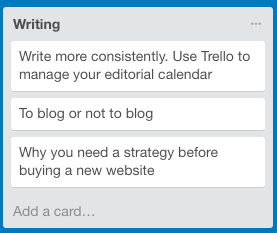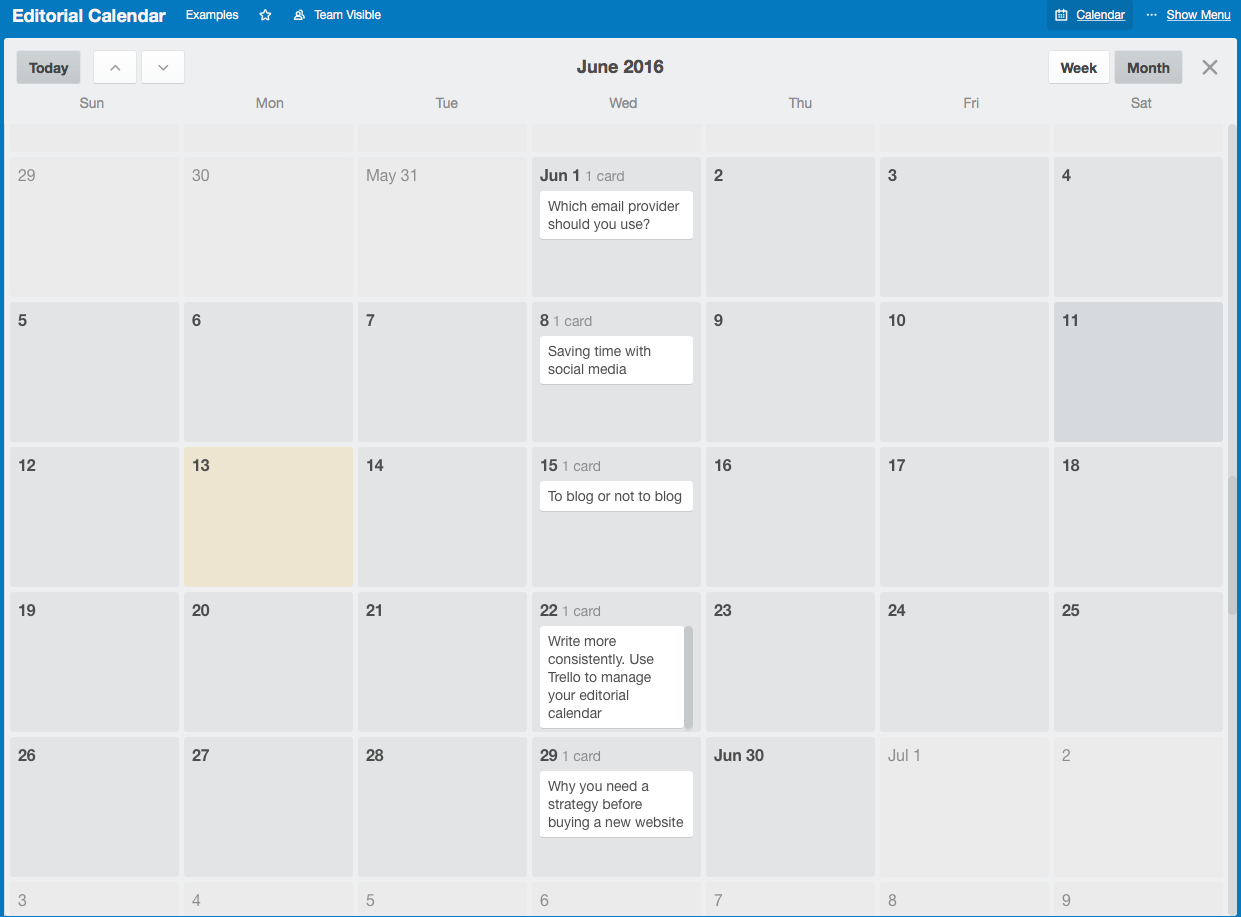Building an audience through content marketing and email marketing is a great way to generate more leads and new customers online. Over time, you can educate your audience, showcase your skills, attract people who can eventually become your customers and use the act of helping to build your business.
But the key is consistency. Writing engaging articles for your target market is not a one time event - it needs to be part of your schedule. You don’t have to be publishing a new article every day like some people might tell you. Every week is ideal, but if you can’t manage that, once or twice a month can also work. What ever frequency you decide on, just make sure that you can stick to it. If your readers expect a new article from you every month, just make sure you deliver it, so when they return to your site they won’t be disappointed.
Publishing regularly also shows search engines like Google that you have a serious website. They like new fresh content, especially if it is written genuinely with the intention of helping people.
You may be worried about your writing skills. Most people I’ve met are. But by writing on a regular basis, your writing skills will improve. You will develop a writing muscle and you will find your voice. Like anything, it's a case of learning the basics and consistent practice. It took me some time to develop my writing skills and to find my style. But once I honed the ability, benefits have been huge. Now I really enjoy writing. It enables me to help people at scale. And it has proved to be a tremendous way to build my business.
But we all have busy lives and it’s easy to let things slip. I’ve been there. You think you’ll write that blog post tomorrow. But tomorrow never comes.
Editorial Calendar
Using an editorial calendar is a great way to ensure consistency. An editorial calendar is essentially a roadmap of articles that you will publish in the future with dates attached. So you know what you will publish and when for the next month or two. Once you have made that simple commitment to yourself, doing the writing becomes easier because you have a deadline.
Multiple stage process
Writing is a multiple stage process. You don’t just sit down and write and that is the end of it. Typically an article starts with an idea, then an outline, then a draft, then an edit and eventually you publish it.
Putting it all together with Trello
Trello is an incredible popular project management app. If you have never heard of it, don’t worry - it is very easy to use and consists of boards and lists within boards. Each list can be a stage in your writing process.
A simple editorial calendar board could contain the following stages:
- Idea: a list of ideas for future articles
- Writing: articles you are currently in the process of writing
- Editing: articles to be edited and tidied up by you or an editor
- Publish: articles to publish on your blog
- Done: articles that are complete and published
This is how these stages appear in Trello:

For each article you want to write, create a new card. You can think of a card as a sticky note that you stick on the fridge or on your computer monitor to remind you to do something. A card belongs to one of the above stages, which in Trello language is a list. You can then move your card between each of the stages by dragging it to the next list.
This is the writing stage with three blog posts, each with its own card:

I have quite a few steps in the process, you might not have quite as many as me! I have the following lists in my Editorial Calendar board:
- Idea
- Research
- Outline
- Draft
- Finishing
- Being edited
- Review edit
- Ready to publish
- Marketing the content
Calendar view
With each card, I set a due date, which is the date it will be published. You can add a calendar to your board by going to Power ups. You will then see a nice calendar with the publication dates of all of your blog posts, making it really clear to see when they are going live. You can drag them around in the calendar if you wish, which will automatically change the due date. Quite often I set the dates on each card and then re-arrange them in the calendar view because it is easier to see them all at once.
This is what the calendar looks like:

Collaborating with an editor
In my lists above, you will notice I have a Being edited stage. All my articles are edited by my wife who picks up typos and grammatical errors. I have added her to the board and I assign a card to her if it is time for her to edit a post.
If you don’t have someone else to edit your posts, don’t let that stop you writing. But if you do, it can be a great help.
Sidenote: we manage the editing of the articles with a great web app called Draft.
Keeping information together
Another benefit of using Trello is that each card can contain a lot of information. You can add a checklist which acts as a todolist for each article. You can attach files. You can add comments. Having everything on one card is great for easy reference.
You don’t need to use Trello
Trello is the tool I use to manage my editorial workflow, but it is just a tool. You can use any other tool if you prefer - a spreadsheet, a todolist application, physical index cards on the wall, pen and paper. The important thing is to setup a process that supports you in writing and publishing on a regular and consistent basis.
No spam, no sharing to third party. Only you and me.

